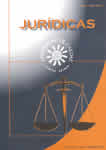##plugins.gregg.article.details.published##: 2007-07-01
Como Citar
Serrano Moya, E. D. (2007). -. Jurídicas, 4(2), 17–30. Recuperado de https://revistasojs.ucaldas.edu.co/index.php/juridicas/article/view/5658
Fomatos de Citação
Autores
Resumo
-
Palavras-chave
Referências
ANNUND, Hylland. (1982). Purpose and Significance of Social Choice Theory. En: Foundations of Social Choice Theory. London: Cambridge University Press.
ARROW, Kenneth. (1951). Social Choice and Individual Values. New York: Jhon WiLey.
__________. (1978). El equilibrio económico general: propósito, técnicas analíticas, elección colectiva. En: Los premios Nóbel de Economía 1969-1977. México: Fondo de Cultura Económica.
__________. (1987). Arrow’s Theorem. En: The New Palgrave A Dictionary Of Economics. London: Macmillan.
__________. (1994). Elección social y valores individuales. Barcelona: Planeta-Agostini.
BUCHANAN, James & TULLOCK, Gordon. (1962). The Calculus for Consent. Michigan: Ann Arbor University Press.
ELSTER, Jon. (1982). Foundations of social choice theory. London: Cambridge University.
GIBBARD, Allan. (1969). Intransitive Social Indifference and the Arrow Dilemma. Sin publicar.
__________. (1973). Manipulation of voting schemes: A general result. En: Econometrica No. 41. Ohio: Blackwell Publishing.
GONZÁLES, Jorge Iván. (1999). Sen y la Elección Colectiva. En: Cuadernos de economía No. 29. Bogota: Universidad Nacional.
Hurwicz, Leonid. (1972). Decision and Organization. Amsterdam: McGuire & Radner Editors.
MONSALVE, Sergio. (1998). Implementación, Elección Social y Teoría de Juegos. Valencia: Mimeo.
MULLER, David. (1979). Public Choice. London: Cambridge University Press.
SALCEDO, David. (1994). Elección social y desigualdad económica. Madrid: Anthropos.
SATTERTHWAITE, Mark. (1975). Strategy-proofness and Arrow’s Conditions: Existence and Correspondence Theorems for Voting Procedures and Social Welfare Functions. En: Journal of Economic Theory, 10 (April), 187-217.
__________. (1989). Strategy-Proof Allocation Mechanisms. En: Game Theory. The New Palgrave A Dictionary of Economics. London: Macmillan Publishers Limited.
SEN, Amartya. (1970). Collective Choice and Social Welfare. New York: John WilLey.
__________. (1976). Elección Colectiva y Bienestar Social. Barcelona: Alianza Editorial.
__________. (1979). Sobre la desigualdad económica. Barcelona: Editorial Crítica.
__________. (1987a). On Ethics and Economics. En: The New Palgrave A Dictionary of Economics. London: Macmillan.
__________. (1987b). Social Choice. En: The New Palgrave A Dictionary of Economics. London: Macmillan.
__________. (1995). Rationality and Social Choice. AER. Vol. 85, No. 1.
SERRANO, Edgard. (1999). El Teorema de la imposibilidad de Arrow. Una Mirada desde el Diseño de Mecanismos. En: Ensayos de Economía. Vol. 9, No. 15. Medellín: Universidad Nacional.
TAYLOR, Lance. (1982). La Teoría de la Elección Social y el Mundo en que Vivimos. En: Cuadernos de Economía. Bogota, Vol. XVII, No. 29.
VANHUYSSE, Pieter. (2000). On Sen’s Liberal Paradox and its reception within Political Theory and Welfare Economics. New York: Political Studies Association.
ARROW, Kenneth. (1951). Social Choice and Individual Values. New York: Jhon WiLey.
__________. (1978). El equilibrio económico general: propósito, técnicas analíticas, elección colectiva. En: Los premios Nóbel de Economía 1969-1977. México: Fondo de Cultura Económica.
__________. (1987). Arrow’s Theorem. En: The New Palgrave A Dictionary Of Economics. London: Macmillan.
__________. (1994). Elección social y valores individuales. Barcelona: Planeta-Agostini.
BUCHANAN, James & TULLOCK, Gordon. (1962). The Calculus for Consent. Michigan: Ann Arbor University Press.
ELSTER, Jon. (1982). Foundations of social choice theory. London: Cambridge University.
GIBBARD, Allan. (1969). Intransitive Social Indifference and the Arrow Dilemma. Sin publicar.
__________. (1973). Manipulation of voting schemes: A general result. En: Econometrica No. 41. Ohio: Blackwell Publishing.
GONZÁLES, Jorge Iván. (1999). Sen y la Elección Colectiva. En: Cuadernos de economía No. 29. Bogota: Universidad Nacional.
Hurwicz, Leonid. (1972). Decision and Organization. Amsterdam: McGuire & Radner Editors.
MONSALVE, Sergio. (1998). Implementación, Elección Social y Teoría de Juegos. Valencia: Mimeo.
MULLER, David. (1979). Public Choice. London: Cambridge University Press.
SALCEDO, David. (1994). Elección social y desigualdad económica. Madrid: Anthropos.
SATTERTHWAITE, Mark. (1975). Strategy-proofness and Arrow’s Conditions: Existence and Correspondence Theorems for Voting Procedures and Social Welfare Functions. En: Journal of Economic Theory, 10 (April), 187-217.
__________. (1989). Strategy-Proof Allocation Mechanisms. En: Game Theory. The New Palgrave A Dictionary of Economics. London: Macmillan Publishers Limited.
SEN, Amartya. (1970). Collective Choice and Social Welfare. New York: John WilLey.
__________. (1976). Elección Colectiva y Bienestar Social. Barcelona: Alianza Editorial.
__________. (1979). Sobre la desigualdad económica. Barcelona: Editorial Crítica.
__________. (1987a). On Ethics and Economics. En: The New Palgrave A Dictionary of Economics. London: Macmillan.
__________. (1987b). Social Choice. En: The New Palgrave A Dictionary of Economics. London: Macmillan.
__________. (1995). Rationality and Social Choice. AER. Vol. 85, No. 1.
SERRANO, Edgard. (1999). El Teorema de la imposibilidad de Arrow. Una Mirada desde el Diseño de Mecanismos. En: Ensayos de Economía. Vol. 9, No. 15. Medellín: Universidad Nacional.
TAYLOR, Lance. (1982). La Teoría de la Elección Social y el Mundo en que Vivimos. En: Cuadernos de Economía. Bogota, Vol. XVII, No. 29.
VANHUYSSE, Pieter. (2000). On Sen’s Liberal Paradox and its reception within Political Theory and Welfare Economics. New York: Political Studies Association.
Downloads
Não há dados estatísticos.

 PDF (Español)
PDF (Español)
 FLIP
FLIP



















